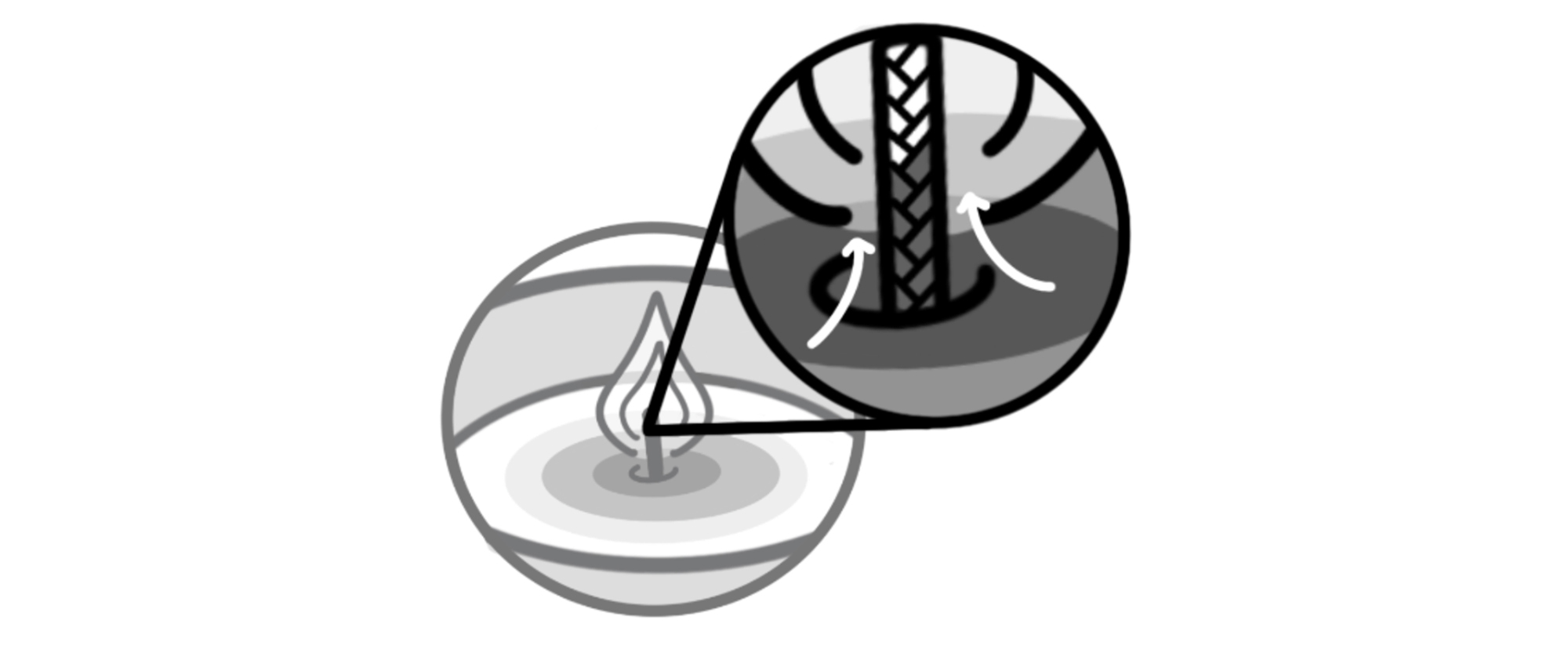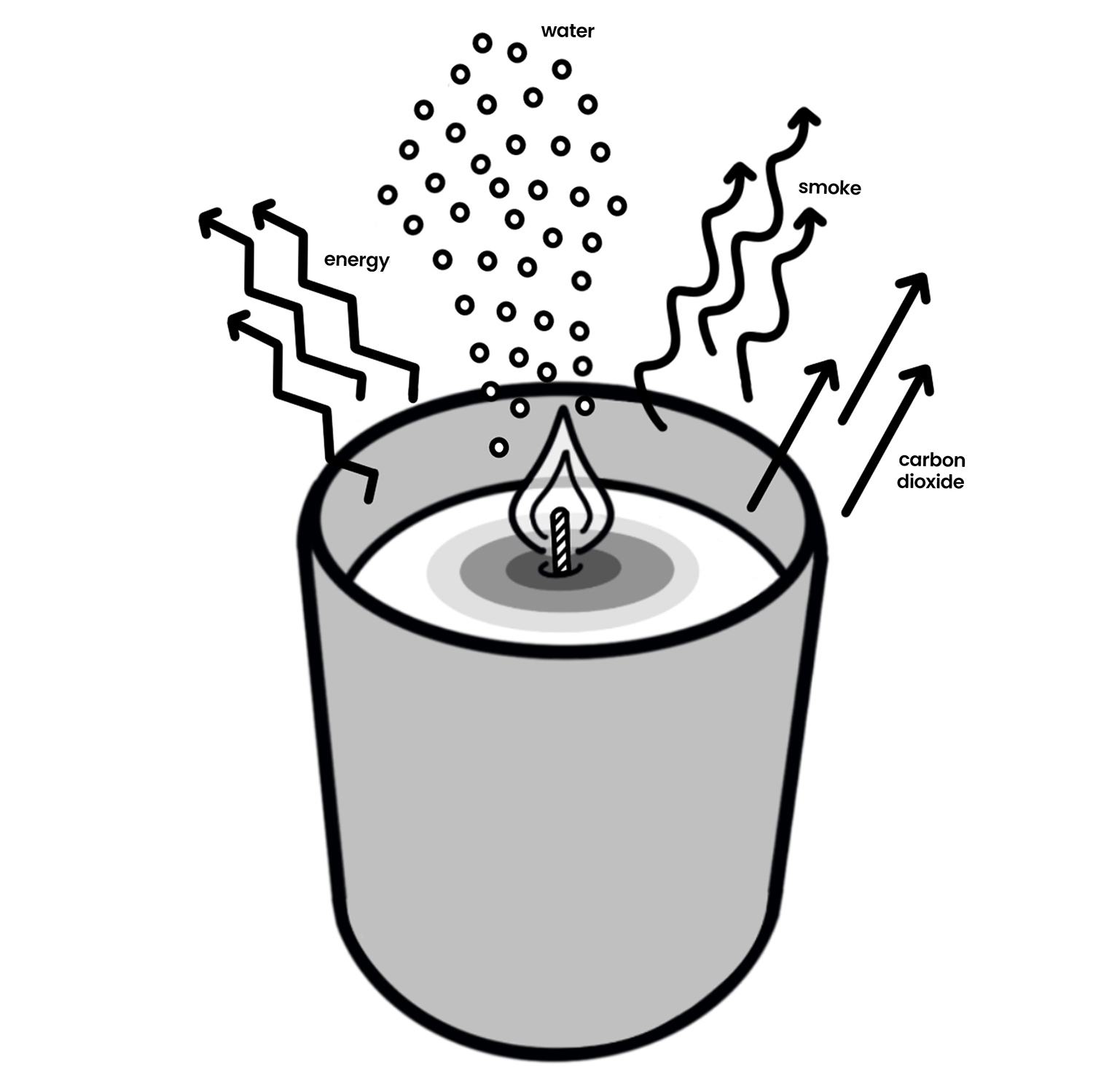where does the wax go when a candle burns? Discover the reason behind the illusion of burning candle wax vanishing into thin air.

Perhaps you’ve pondered this question yourself. As a candle burns, it gradually diminishes in size until little or no wax remains. But where does the wax go?
At first glance, the wax seems to simply vanish. But in reality, more is happening than meets the eye. This “disappearing act” is a chemical reaction that we can explain through science—candle science, if you will. Let’s take a closer look!
What is candle wax made of?
Candle wax—whether soy wax, paraffin wax, beeswax, or another type—is composed of hydrogen and carbon atoms called hydrocarbons. Specifically, they are long-chain hydrocarbons, meaning they take a solid form at room temperature. This solid state allows the wax to be formed into flakes and slabs, and burn relatively slowly when made into a candle.
The burning process
At its most basic, a candle consists of two main parts: wax and wick.
The wax is the candle’s fuel. However, wax cannot burn on its own, even when exposed directly to fire.
It needs a lit wick to begin the combustion process—the scientific word for burning.

When a candle wick is lit, the flame's high heat melts the wax at the base of the wick, transforming it into a liquid state.
The wick, acting like a straw, draws the liquid wax up into the flame—a process called capillary action.

The intense heat of the candle’s flame causes the melted wax in the wick to vaporize, turning it into flammable gas vapor.

Reacting with oxygen in the air, the vaporized wax then combusts into a flame, releasing:
- energy, in the form of light and heat
- trace soot and smoke
- carbon dioxide
- water particles
This process continues for as long as wax and oxygen are available. Though we recommend only burning candles for 3-4 hours at a time!
So the long and the short of the candle’s seeming disappearing act?
Candle wax is transformed by a combustion reaction involving the heat of the flame, plus the presence of oxygen and fuel. This reaction turns the solid wax into invisible carbon dioxide gas and water vapor.

We hope this answer demystified what happens to your candles when you burn them. If you have any technical questions about candles or candle making, our Support Team is here to help!
We also share in-depth articles about candle making on our Learning Page and how-to educational videos on our YouTube channel.